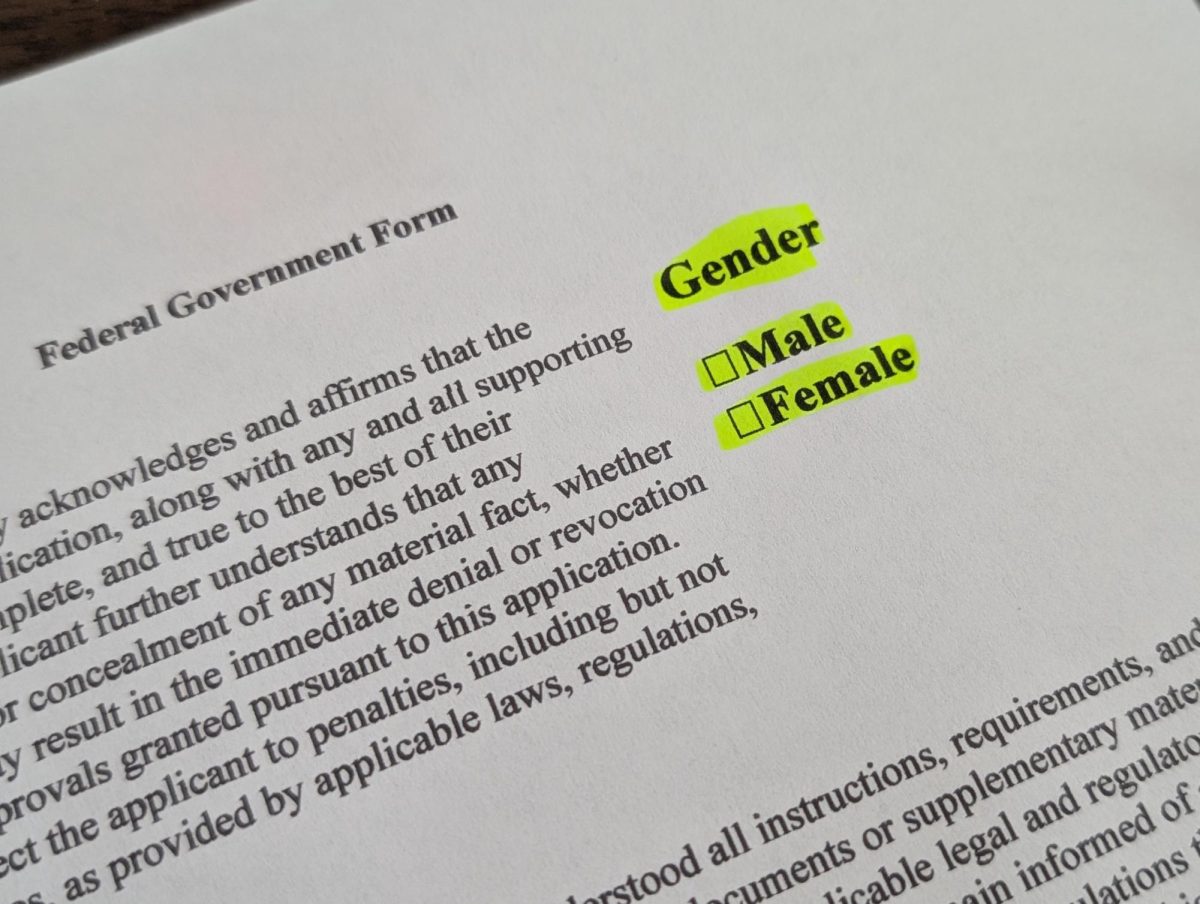Students who wish to identify as nonbinary on the financial aid application will now need to choose between two options as of the Trump administration’s new executive order on Feb. 4.
The executive order “Defending Women from Gender Ideology Extremism and Restoring Biological Truth to the Federal Government” makes it so that students who are looking to use the gender-inclusive term while filling out the Free Application for Federal Student Aid, or FASFA, will now only be able to identify as two genders: male or female.
“I don’t believe it’s fair and I feel like this could be a bigger issue than a lot of people may realize,” said Olivia Papandrea, a design student at San Francisco State University.
“Resolving ongoing problems with the 2024-25 form, reflecting biological reality by referencing sex identifiers, and beginning the process for the 2026-27 form on time will allow the Department to earn back the trust of the American people,” said Acting Under Secretary James Bergeron in an announcement.
According to the U.S. Department of Education, “release delays or unnecessary politicization of the form” can put a hold on a student’s future.
With FASFA being targeted with the most immediate effects of this executive order, it calls into question what the future of the LGBTQ+ community will look like.
Tria Rosa Valbuena is an SFSU student pursuing her master’s in social work. Valbuena is a part of the Associated Students’ Queer and Trans Resource Center, a program that brings LQBTQ+ events, resources and services to SFSU.
“It’s the start of a very worrying system — the elimination of the concept of queerness,” Valbuena said. “We’ve already seen the villainization and dehumanization of queer folks in the language they use. They’re now trying to remove all acknowledgment of their existence.”
According to the executive order, “gender ideology replaces the biological category of sex with an ever-shifting concept of self-assessed gender identity, permitting the false claim that males can identify as and thus become women and vice versa, and requiring all institutions of society to regard this false claim as true. Gender ideology includes the idea that there is a vast spectrum of genders that are disconnected from one’s sex.”
So what comes next after FASFA? With minor effects beginning within the first month of Trump’s presidency, the future of limitations targeted toward the LGBTQ+ community is highly anticipated.
“I think it’s telling that it’s happening now,” said biology student Blaise Slattery. “I’m not a part of the community but I feel for them that they have fear in the beginning of changes.”
According to GLBTQ Legal Advocates and Defenders, the order could also limit LQBTQ+ individuals from being issued a passport that accurately reflects their gender, limit appropriate housing and healthcare to incarcerated trans individuals, reverse the rules for individuals to receive safe access to housing and remove the mention of gender identity from language and forms.
“When you think about it in the bigger picture, it’s scary,” said Ryder Asher, a business student. “You just have to put yourself in someone else’s shoes and reflect.”
The uncertainty of the traction the executive order will gain leaves the trans community in constant fear of the future of how they identify and how they will be perceived.
“I’m fearful for a lot. I’m fearful that they will eventually try to deny people hormone care,” Valbuena said. “I worry that my legal protections from hate crimes to discrimination in the workplace will be removed. I worry that I will be forced to change my gender-identifying name back to the one that I had on my birth certificate. Quite frankly, I worry about an escalation of these policies.”










